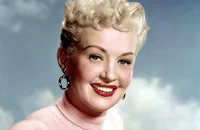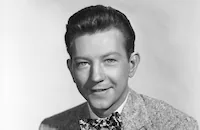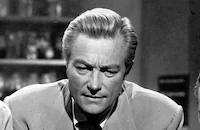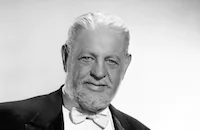Million Dollar Legs
Brief Synopsis
Cast & Crew
Nick Grinde
Betty Grable
John Hartley
Donald O'connor
Jackie Coogan
Dorothea Kent
Film Details
Technical Specs

Synopsis
When the Middleton College basketball team wins the championship, oilman Gregory Melton, Sr., the university's major benefactor, awards each of the players a gold basketball, but gives his son, Greg, Jr., one imbedded with pearls. Tired of getting special treatment because of his father's money, Greg begins to lose confidence in his athletic and leadership talents. Meanwhile, Freddie Fry, campus entrepreneur, schemes to start a crew team when his girl friend, Suzie Quinn, complains he doesn't have a varsity letter. Freddie asks Greg's girl friend Carol Parker, a reporter for the Daily M , to convince Greg to set an example by joining crew, and the team starts training. Coach Baxter appoints Freddie as cockswain, and he begins jogging with a young jockey. The Middleton boathouse is in shambles, and during their first match, their boat springs a leak and they lose. When Greg hears that Freddie schemed with Carol to get him on the team, he thinks they only want him for his money. Freddie proves him wrong when he uses student money to win a horse race at twenty-to-one odds and buys a new boat. Melton, Sr., meanwhile, gives Middleton a new basketball stadium to get the students' minds off crew. Freddie stages a bonfire and rally, which Greg refuses to attend, but Freddie then convinces Greg that Carol in innocent, and they are reconciled. Dean Wixby, acting on Melton's behalf, punishes Freddie for betting and forbids him to act as cockswain in the approaching big race. Hoping to force his way into the race, Freddie feeds his replacement, Egghead Jackson, four tamales, and because of his stomach ache, Jackson is unable to lead the men. Always thinking on his feet, Freddie jumps into the Daily M 's car and shouts commands to the team via the loudspeaker, leading them to victory. Melton gets so excited by the race, he renounces his objections to crew, and Freddie finally wins his varsity letter.

Director
Nick Grinde
Cast

Betty Grable
John Hartley

Donald O'connor

Jackie Coogan
Dorothea Kent
Joyce Mathews

Peter Hayes

Larry Crabbe

Richard Denning
Phillip Warren
Edward Arnold Jr.

Thurston Hall

Roy Gordon
Matty Kemp
William Tracy
Russ Clark
Wallace Rairden
John Hart
Anthony Marsh
Tom Seidel
Lambert Rogers
Rob Ireland
Roger Laswell
Bill Boggess
Ken Nolan
Bill Wilkerson
James Kelso
Si Jenks
William Conselman Jr.

Byron Foulger
Jack Smart
Pat West

Billy Gilbert
Dorothy Moore
George Magrill
Nick Copeland
George Anderson
Charles Regan
Allen Fox

Russell Wade
Tom Dugan
Florence Farley
Eve Carlton
Crew
Edward Dmytryk
Hans Dreier
Richard English
Harry Fischbeck
William Flannery
Lewis R. Foster
Lewis R. Foster
A. E. Freudeman
Alvin Ganzer
Erwin Gelsey
Stuart Gilmore
Louis S. Kaye
William Lebaron
Joseph Lefert
Harry Mills
Glenn Rominger
Arthur Schmidt
William C. Thomas
Phil G. Wisdom

Film Details
Technical Specs

Articles
Donald O'Connor, 1925-2003
Born Donald David Dixon O' Connor in Chicago on August 28, 1925, he was raised in an atmosphere of show business. His parents were circus trapeze artists and later vaudeville entertainers, and as soon as young Donald was old enough to walk, he was performing in a variety of dance and stunt routines all across the country. Discovered by a film scout at age 11, he made his film debut with two of his brothers in Melody for Two (1937), and was singled out for a contract by Paramount Pictures. He co-starred with Bing Crosby and Fred MacMurray in Sing, You Sinners (1938) and played juvenile roles in several films, including Huckleberry Finn in Tom Sawyer - Detective (1938) and the title character as a child in Beau Geste (1939).
As O'Connor grew into adolescence, he fared pretty well as a youthful hoofer, dancing up a storm in a string of low-budget, but engaging musicals for Universal Studios (often teamed with the equally vigorous Peggy Ryan) during World War II. Titles like What's Cookin', Get Hep to Love (both 1942), Chip Off the Old Block and Strictly in the Groove (both 1943) made for some fairly innocuous entertainment, but they went a long way in displaying O'Connor's athletic dancing and boyish charm. As an adult, O'Connor struck paydirt again when he starred opposite a talking mule (with a voice supplied by Chill Wills) in the enormously popular Francis (1949). The story about an Army private who discovers that only he can communicate with a talking army mule, proved to be a very profitable hit with kids, and Universal went on to star him in several sequels.
Yet if O'Connor had to stake his claim to cinematic greatness, it would unquestionably be his daringly acrobatic, brazenly funny turn as Cosmo Brown, Gene Kelly's sidekick in the brilliant Singin' in the Rain (1952). Although his self-choreographed routine of "Make "Em Laugh" (which includes a mind-bending series of backflips off the walls) is often singled out as the highlight, in truth, his whole performance is one of the highlights of the film. His deft comic delivery of one-liners, crazy facial expressions (just watch him lampoon the diction teacher in the glorious "Moses Supposes" bit) and exhilarating dance moves (the opening "Fit As a Fiddle" number with Kelly to name just one) throughout the film are just sheer film treats in any critic's book.
After the success of Singin' in the Rain, O'Connor proved that he had enough charisma to command his first starring vehicle, opposite Debbie Reynolds, in the cute musical I Love Melvin (1953). He also found good parts in Call Me Madam (1953), There's No Business Like Show Business (1954), and Anything Goes (1956). Unfortunately, his one attempt at a strong dramatic role, the lead in the weak biopic The Buster Keaton Story (1957) proved to be misstep, and he was panned by the critics.
By the '60s, the popularity of musicals had faded, and O'Connor spent the next several years supporting himself with many dinner theater and nightclub appearances; but just when it looked like we wouldn't see O'Connor's talent shine again on the small or big screen, he found himself in demand at the dawn of the '90s in a string of TV appearances: Murder She Wrote, Tales From the Crypt, Fraser, The Nanny; and movies: Robin Williams' toy-manufacturer father in Toys (1992), a fellow passenger in the Lemmon-Matthau comedy, Out to Sea (1997), that were as welcoming as they were heartening. Survivors include his wife, Gloria; four children, Alicia, Donna, Fred and Kevin; and four grandchildren.
by Michael T. Toole

Donald O'Connor, 1925-2003
Quotes
What's his name?- The President
I call him Sweetheart.- Angela
Hey, Sweetheart!- The President
It was our beloved student body president!- Dean Wixby
Frye?- Coach Baxter
Fry! I'll boil him in oil.- Dean Wixby
Trivia
Notes
This film's working title was Campus Dormitory. Exteriors for the film were shot in San Pedro and at the Olympic rowing course in Long Beach, CA. Film Daily and copyright records list Stuart Gilmore as the film editor, while Arthur Schmidt is credited on the screen. According to Hollywood Reporter, actor John Hartley replaced William Henry, who was busy with another film. According to a Hollywood Reporter news item on April 13, 1939, ten days into principal shooting, director Nick Grinde was "forced out" with a serious throat infection and Paramount editor Edward Dmytryk "took over." Dmytryk's account in his autobiography of his participation in the film conflicts with this news item. According to Dmytryk, Paramount executive Harold Hurley hired "a director" [Grinde] for a two-picture deal; after the first film proved disappointing, Hurley asked Dmytryk to act as co-director with no authority on Million Dollar Legs. Dmytryk states that Grinde "struggled on" for a week before the "ax fell." Dmytryk further states that, as no other director was willing to take on the project without a few days' production hiatus for familiarization, which a "B" picture made prohibitive, he took over as director. Grinde is listed as director in the Hollywood Reporter production charts found for this film. Grinde actually made two pictures for Paramount prior to his work on Million Dollar Legs: King of Chinatown and Sudden Money (see related entries). Although Dmytryk directed an independent western called The Hawk in 1935 (see below), Hollywood Reporter touts Million Dollar Legs as his directorial debut. The Hollywood Reporter review for Million Dollar Legs states, "The film practices a mild deceit in title, unless it is so justified by one longshot of Betty Grable's sightly underpinnings."














